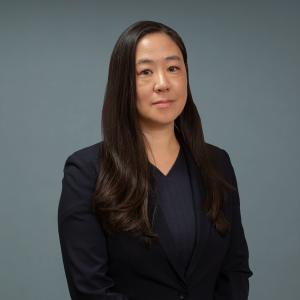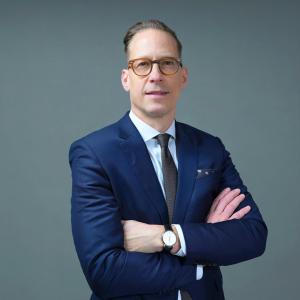
Dr. Marleen I. Meyers discusses the importance of continuing care for people who survive cancer.
Photo: NYU Langone Staff
Marleen I. Meyers, MD, is a clinical associate professor in the Department of Medicine and the founding director of the Survivorship Program at NYU Langone Health’s Perlmutter Cancer Center. A medical oncologist whose practice is largely devoted to treating people with breast cancer, Dr. Meyers has participated in breast cancer clinical research, and she works to advance clinical trials in survivorship and bring the importance of survivorship to the forefront of oncology care.
She discusses how people with cancer can benefit from a survivorship program, the importance of community outreach in oncology, and more.
What are the origins of the Cancer Survivorship Program, and what has it accomplished?
I am really so proud of Survivorship. We have done an enormous job, not only for our patients, but in meeting the metrics for the Commission on Cancer and getting people to buy in and appreciate what we’ve done.
The program originated with the need to give people survivorship care plans at the completion of treatment. This is a document that is also given to their primary care doctor, which outlines their cancer treatment, what the surveillance should be, what they should be doing going forward, who will order their tests, etc. We have also worked very hard on oncology rehabilitation for all sorts of conditions both during and after treatment, including strengthening for osteoporosis, teaching people to exercise, and minimizing joint stiffness in people who are on certain medications. And we’ve worked very hard with nutrition as well to try to get every person who is starting chemotherapy to be seen by a nutritionist and to follow up afterward for a lifetime of good nutrition.
Going forward, we are expanding to work more with cardio oncology. We’re building very strong ties with the cardiologists. Having completed our pilot in breast cancer, we are going to reach out to patients with genitourinary cancers, particularly prostate cancer, for which men may be at cardiac risk because of long-term hormone therapy. We have also partnered with many other groups, such as Cancer Fit and Athleta. Before the 2019 coronavirus disease (COVID-19) pandemic closed all the gyms, we were partnering with gyms that gave discounts to our patients who wanted to row indoors. The plan is to keep growing that.
We have very strong ties with psychosocial health, and as part of oncology rehab, we also can do cognitive training and evaluation. Some people on chemotherapy find that their sharpness or their cognitive function may be decreased. Addressing these issues have been very helpful to people as well.
We need to address those who have survived pediatric cancer, since they come into adulthood with issues as a result of treatment they may have had 10 or 15 years ago. As adults they must be screened and followed for new cancers and side effects of treatment.
The sky is the limit. We really have so much more work to do because people are living longer and doing so much better.
How do people who are struggling with cancer benefit from the Cancer Survivorship Program?
Survivorship stems from the fact that years ago, because people often didn’t survive cancer, we really never thought of survivorship or what life was like after cancer. Over the ensuing years, because of improvements in cancer treatment and curability and survivorship, people were in fact living longer, but they were living with the side effects, both emotional and physical, of their treatment or of the diagnosis. What survivorship gives most people is the ability to live in a world that’s different from what they used to know, but still extremely meaningful. It also addresses many issues that come up with the diagnosis of cancer and the consequences of treatment, whether it’s chemotherapy, radiation, or hormone therapy. Very importantly, we give survivors tips and advice and lifestyle changes that can act to reduce the risk of a new cancer arising or of their cancer recurring.
Survivorship is not only about treating symptoms as they arise, but also thinking ahead and being proactive to try to prevent as many long-term side effects as possible.
Are some people with cancer resistant to the idea of survivorship?
Some people don’t like the word survivorship. Some people prefer to be called thrivers rather than survivors. We tend to look at it more as a wellness program, and nobody takes fault with that. People may not want to do the things that are required for wellness in terms of good nutrition, physical activity, stopping smoking, all of the important things that we want people to do, but it is there for them when they are ready. I think we tend to approach survivorship more as a wellness program because it has a connotation of being proactive for good health going forward.
You devote a considerable amount of time to community outreach. Why is that so important?
Community outreach is crucial because there are so many people who either don’t have access on their own or wouldn’t even think of going to a survivorship program after a diagnosis of cancer. Many people have never considered lifestyle changes to improve outcomes. If they see an advertisement or they hear of something, or they know that there’s a webinar coming on, especially now when most people are home, it’s just so easy to tune in and to get good information.
It’s important to educate people about what they should be doing for optimal health and to get them on the right track. We also want to dispel myths about cancer, which run the gamut of “I don’t have a family history of cancer, therefore I don’t need any screening” to, in the midst of the COVID-19 pandemic, “Even though I have a pain or a lump, I shouldn’t go to the doctor because COVID-19 is rampant and I could die from it.” Sometimes fear issues come up because they’ve seen someone die of cancer or they’ve seen someone go through chemotherapy and a person may be very afraid to embark on that course.
Another very important reason for community outreach is that we really do a good job with the wellness part of it, and obesity and poor nutrition are terrible problems in this country. Part of it is of course an economic problem, but it is also due to the fact that we don’t have the proper services to teach people to eat healthfully and to exercise. Anything we do to get out into the community to build bridges with people so that they make a commitment to their body and their good health is helpful.
Some people with cancer might try alternative treatments such as supplements. Why is it important for them to inform their oncologist?
There are people who are skeptical about Western medicine and believe that there are alternative approaches such as Eastern medicine or supplements or herbs. They have not been proven to be effective. There are two issues that come up with this. First, if people are taking alternative treatment, we want to make sure that they not to doing things that counteract a treatment we are giving them.
The second issue which is more dangerous, is sometimes people will do alternative therapy in lieu of standard treatment. That is very dangerous because there really is no alternative therapy that we know about that cures or treats cancer that works better than standard treatment.
Having said that, there are types of complementary therapy that may be very, very helpful during treatment. They include things like massage, acupuncture, or therapeutic touch. There are lots of things that help some of the symptoms of treatment, and I strongly encourage patients to do some of those things if they’re able and interested, because we often can mitigate some symptoms. But people do have to realize that anything they take by mouth, even if it says natural on the bottle, is not natural. It can have contaminants or it may interfere with treatment that we’re giving them. So our patients should always be honest with what they’re taking and at least have the discussion with their doctor.
What have you learned from your interactions with people with cancer?
What I’ve mostly learned is that people want to be healthy. I have no doubt that people want to live long, good, healthy lives. I think what is a little harder, is to get people to adopt healthy lifestyles and to stick with it. There are so many pressures on people to not do healthy things. It is very difficult to educate people about healthful cooking, eating, and exercise, and as clinicians we need to be encouraging, patient, and accepting of people.
As healthcare providers we have to set good examples, but we also have to be very patient and understand a person’s life and how they can perhaps make small changes rather than big ones. It might be something as simple as knowing that you don’t have to give up all those things that you’re eating, just eat less of it. Take 20 percent off your plate.
With exercise, people who perhaps are overweight or are not athletes might be embarrassed to go to the gym. Instead of telling them to go to the gym, I might suggest that I want them to walk 3 times a week for 15 minutes. I try to build confidence in people as well as build trust. And I think ultimately that’s the bridge that has to be built. It’s not that people don’t want to be healthy. They definitely do. But there are so many obstacles between them wanting to do that and actually doing it, and I think that’s the most difficult part of all this.

